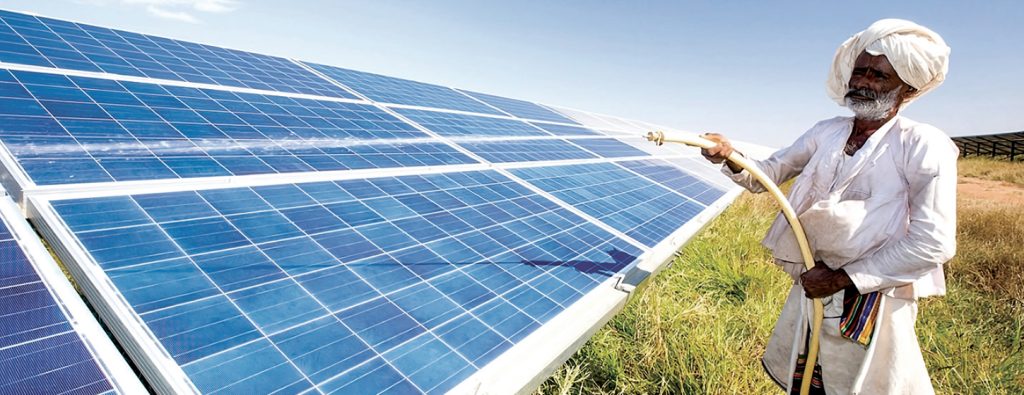India’s solar ambitions stalled by land and grid challenges
While the Government has aggressively promoted solar energy through various incentives and policy measures, the slow pace of infrastructure development and bureaucratic inefficiencies are putting the sector’s growth at risk.
Frequent changes in solar energy policies, slow disbursement of subsidies, and complex approval processes discourage private investment and delay project execution.
India’s drive toward a clean energy future is running into significant roadblocks. A new report by Ember, a global renewable energy think tank, reveals that large-scale solar projects in the country are facing an average delay of 17 months, mainly due to land acquisition hurdles, sluggish grid expansion, and regulatory bottlenecks.
These delays threaten India’s ambitious target of achieving 280 gw of solar capacity by 2030, a crucial milestone in its transition away from fossil fuels. While the Government has aggressively promoted solar energy through various incentives and policy measures, the slow pace of infrastructure development and bureaucratic inefficiencies are putting the sector’s growth at risk.
Bureaucratic limbo
The report highlights how solar projects across the country are struggling to get off the ground due to difficulties in acquiring land, delays in signing Power Purchase Agreements (PPAs), and the lack of sufficient transmission infrastructure. These obstacles not only prolong commissioning timelines but also make investment in the sector riskier, leading to increased costs for developers.
Financial uncertainties are another major concern. Investors are now factoring in higher risk premiums due to project delays, making it harder to secure funding. The report assesses this risk using two benchmarks P50, which predicts a 50 per cent likelihood of meeting expected returns, and P90, which offers a more conservative estimate with a 90 per cent probability of achieving lower but stable returns. As delays increase, financial models tilt toward the P90 scenario, discouraging new investments in solar energy.
Challenges persist
To counter these setbacks, the Government has introduced several measures aimed at revitalising the solar sector. The Production-Linked Incentive (PLI) scheme is being expanded to encourage domestic manufacturing of solar panels, reducing dependence on imports, especially from China. The Viability Gap Funding (VGF) scheme has also been strengthened to make large-scale solar projects financially viable for private players.
The Union Budget 2024-25 reflects this renewed focus, with ₹6,250 crore allocated for solar energy initiatives. Key priorities include ramping up domestic production of solar equipment, expanding rooftop solar installations, and improving grid infrastructure. Additionally, the Government is working on upgrading transmission networks and developing battery storage systems to support the growing share of renewable energy in the national grid.
Despite these efforts, industry experts argue that policy uncertainty and regulatory inefficiencies continue to slow progress. Frequent changes in solar energy policies, slow disbursement of subsidies, and complex approval processes discourage private investment and delay project execution.
Road ahead
India’s renewable energy sector has seen impressive growth, with total installed capacity reaching 209.44 gw by December 2024, marking a 15.84 per cent increase over the previous year. However, much of this expansion has been driven by wind and hydro projects, while the solar sector continues to grapple with infrastructure and policy challenges.
These delays also pose a significant risk to India’s net-zero emissions goal by 2070, as solar power is expected to play a central role in reducing dependence on coal. Without urgent action to streamline project approvals, expand transmission capacity, and attract long-term investments, the country’s clean energy ambitions could face serious setbacks. For now, the Government remains optimistic, hoping that a combination of policy reforms, financial incentives, and global investments will help address the current challenges. However, the pressure is mounting to resolve bottlenecks and ensure that India’s solar revolution stays on track.
Waiting for sunlight

As of January 2025, several solar projects in India have encountered delays or have been stalled due to various challenges. Notable ones include:-
Tata Power’s 100 mw project in Nandgaon, Maharashtra
This project faced significant opposition from local farmers who perceived it as a land grab, leading to protests and hunger strikes. The Maharashtra forest department temporarily halted the project in response to these disputes.
Adani Group’s renewable energy park in Khavda, Gujarat
The Adani Group’s plan to build the world’s largest renewable energy park in Khavda encountered scrutiny due to its proximity to the Pakistan border. The Government relaxed national security protocols to facilitate the project, raising security concerns among military experts. Additionally, the project faced delays due to financial and regulatory challenges.
NTPC Kayamkulam floating solar power plant in Kerala
Initially planned to be operational in 2021, this 92 mw project experienced delays due to issues in importing solar cells from China, causing setbacks in the project timeline.
Jharkhand’s 1.2 gw project
In March 2016, Jharkhand awarded contracts to build 1.2 gw of solar capacity. However, the state’s power retailer delayed signing power purchase agreements (PPAs) due to financial constraints, stalling the project’s progress.
ReNew Power’s 500 mw project in Gujarat
This project experienced a 12-month delay in signing the PPA, primarily due to financial challenges faced by the state’s distribution companies (discoms) and regulatory uncertainties.
Adani Green’s 400 mw hybrid project in Andhra Pradesh
The project faced a 10-month delay in signing the PPA, stemming from tariff disputes and policy misalignment between state and central governments.
Tata Power’s 350 mw hybrid project in Karnataka
This project encountered a 9-month delay in PPA signing, influenced by grid infrastructure constraints and financial challenges of the discoms.



